 Be Inspired Blog - Arizona
Be Inspired Blog - Arizona
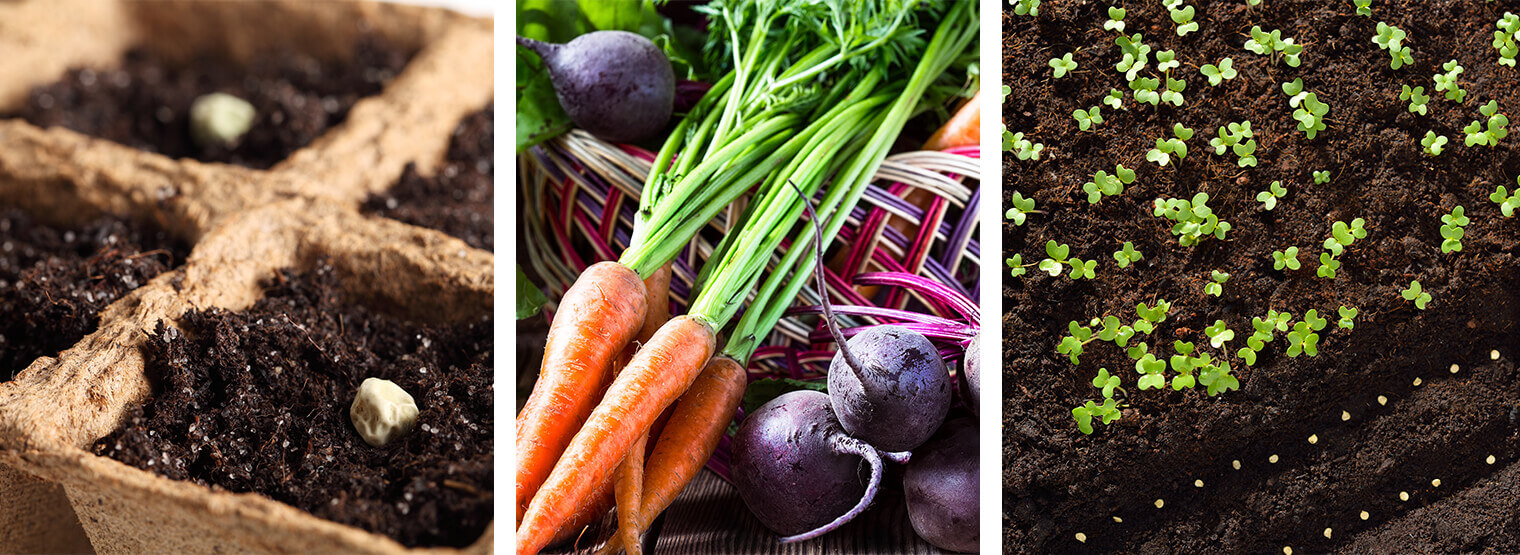
Growing From Seed: How To Find Success In Your Yard
Is there anything so satisfying as eating a fruit or vegetable that you grew yourself? Gardening can be tricky, especially growing from seed, but there’s a reason it’s one of the most popular hobbies in America today. Many people find it a great way to relax, relieve stress and enjoy the great outdoors.
Whether you’re experienced, or just starting to fine-tune your green thumb, it quickly becomes obvious that growing from seed can be an economic winner.
Seeds provide you with a greater variety of options from year to year, and an opportunity to experiment with something new without feeling like you’re throwing away money if your efforts end up on the compost heap. If your plants that you started growing from seed thrive, at the end of its life cycle you can harvest the seeds and start again – the birth of your own heirloom strain.
What’s The Climate Like For Growing From Seed In A Phoenix-Area Garden?
According to the USDA , Phoenix and much of the surrounding area fall into hardiness zone 9b. That means the coldest extreme temperatures that occur hover between 25 and 30 degrees.
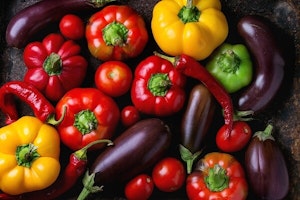
This area has two very different seasons for growing from seed. February to May is perfect for warm-weather plants like tomatoes, bell peppers and eggplant. September to December is best for cool weather plants like spinach and broccoli – but watch the forecast as a stretch of unseasonably warm weather may cause the plants to bolt and go to seed instead of producing. During the summer months the weather is usually too hot and arid to grow healthy vegetables.
Arizona’s Soil And How It Affects Growing From Seed In Your Garden
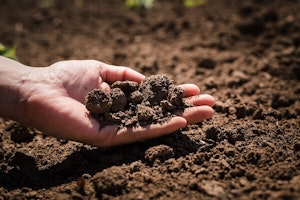
Much of Arizona’s soil is a heavy consistency that oftentimes resembles clay. This means it’s rich in minerals but lacking in organic matter. That’s why plants like cacti can thrive in Arizona heat – because they require very little water and nutritionto grow.
Since most vegetables growing from seed require many more nutrients, you mayneed to amend your soil with organic matter prior to planting. This could mean as much as 50 percent of your garden consists of organic matter like compost. We’ve got a variety of products to help your seed growing efforts bear delicious and beautiful fruit!
Along with adding more nutrients to the soil, amending it with compost lessens the soil’s density by creating more air pockets and allowing vegetable roots to spread much more easily than if the soil consisted of mostly clay. Since July and August can be too hot to grow vegetables, you may consider using this time to amend your soil by mixing in compost and other nutrients and allowing your soil to settle before your September crop is planted.
What We Recommend For Growing From Seed
So, what do SummerWinds’ experts recommend growing from seed in your garden? If you’re starting with seeds, the following options are well suited to local conditions.
Beans
Green beans are a warm season crop and should only be planted after soils have warmed up to 70 degrees. Depending on the variety, your beans may support themselves (bush beans) or need a trellis, fence or other support (pole beans) between six and eight feet tall to climb up.
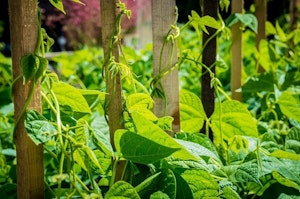 Bush beans growing from seed should be planted one inch deep and 2-4 inches apart with 18-24 inches between rows. Pole beans should be planted one inch deep, 4-6 inches apart and in rows 30-36 inches apart. If you are using a tripod or teepee shaped support, plant five or six seeds in a circle six inches away from the base of each pole.
Bush beans growing from seed should be planted one inch deep and 2-4 inches apart with 18-24 inches between rows. Pole beans should be planted one inch deep, 4-6 inches apart and in rows 30-36 inches apart. If you are using a tripod or teepee shaped support, plant five or six seeds in a circle six inches away from the base of each pole.
Beans have a difficult time germinating if exposed to too much moisture. To avoid this, don’t soak the seeds before planting, but do water the soil afterwards.
Harvest the bean pods when they are firm, crisp and elongated, but before the seeds inside have developed significantly. Regular harvesting of the pods will encourage the plant to continue flowering and boost production.
Beets
Beets tolerate cold temperatures much better than many crops, and seeds can be planted as early as late January. When growing from seed, plant them three inches deep, and about one inch apart. Each “seed” is actually a fruit containing multiple seeds, so you may need to thin the plants as they begin to sprout.
Make sure your beets are growing in an area that requires full sun and high moisture retention, but be prepared to protect them with a tarp overnight if temperatures drop below 30 degrees.
Beets are typically ready to harvest in two to three months, but can be left in the ground for an extended period of time without fear of going to seed. Once harvested, both the bulbous fruit and the greens can be eaten.
Carrots
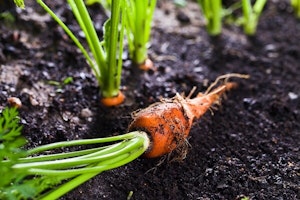 Carrots are an easy choice for most gardeners who are growing from seed; they love a little bit of cold weather when they’re first starting out, so put this crop near the top of your “to do” list. Before planting however, make sure they’ll have plenty of loose soil to grow in by giving your planned area a thorough tilling and removing any large rocks. Carrots prefer full sun, but will tolerate a little shade if they have to.
Carrots are an easy choice for most gardeners who are growing from seed; they love a little bit of cold weather when they’re first starting out, so put this crop near the top of your “to do” list. Before planting however, make sure they’ll have plenty of loose soil to grow in by giving your planned area a thorough tilling and removing any large rocks. Carrots prefer full sun, but will tolerate a little shade if they have to.
Seeds should be planted three to four inches apart, and in rows at least a foot apart. Keep the soil moist, and don’t let it dry out. Carrots growing from seed are also slow starters, so don’t worry if it takes two or three weeks for the first signs of life.
Depending on the variety of carrots you’re growing from seed, it will take between two and four months to reach maturity. They are ready to harvest when the root has reached at least a half-inch in diameter. If you would like more than one harvest, plant your following batches at least three weeks apart.
Corn
Sweet corn is a summertime treat that requires a large space in your garden with plenty of water and high nitrogen fertility. When growing from seed, most varieties are ready to harvest in 60 to 90 days.
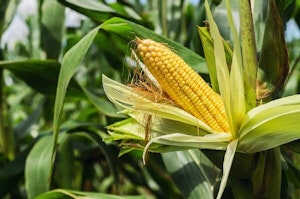 Plant your sweet corn in full sun with well-draining soil. Make sure you have room to plant several rows next to each other in a large block to ensure good pollination and prevent underdeveloped ears.
Plant your sweet corn in full sun with well-draining soil. Make sure you have room to plant several rows next to each other in a large block to ensure good pollination and prevent underdeveloped ears.
Once soil temperatures have reached 60 degrees the time is right for growing from seed. Plant seeds 1-2 inches deep and 12 inches apart with 24-30 inches between rows. Keep the soil thoroughly moist during all phases of growth, but especially during ear development. If you plant several patches two weeks apart, you can stretch your sweet corn harvest over the entire growing season.
Cucumbers
Growing cucumbers in Arizona can be tricky because the intense heat tends to dry them out and turn the plant bitter – but it can be done! The key is to start growing from seed early in the season, and to find a variety that reaches maturity quickly.
In Maricopa County you should have your first batch in the ground by the end of February for a harvest in April. A second batch can be grown from mid-August through September.
Plant a group of three seeds every 12 inches, then thin to one plant per foot when seedlings have three leaves. Since cucumbers are a vine plant, a trellis will keep them off the ground and prevent rot. It will also give other plants room to grow and not be crowded out.
Harvest when the vegetable is small, and the flower is still attached. Cut the stem (instead of pulling to break) and immediately immerse in cold water to increase its quality and life.
Watermelons
Is there anything more indicative of summer than watermelon? These delicious fruits have a long growing season and require a lot of space (vines can easily reach 20 feet in length), but are easy to maintain and growing from seed is well worth the payoff.
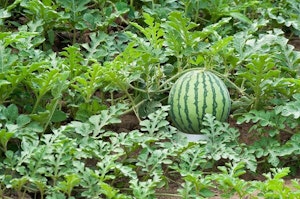 Once soil temperatures have reached 70 degrees, form your dirt into a hill and press 10 seeds about an inch deep. Multiple hills should be at least 3-4 feet away from each other. Once the seeds have sprouted, thin to three sprouts each.
Once soil temperatures have reached 70 degrees, form your dirt into a hill and press 10 seeds about an inch deep. Multiple hills should be at least 3-4 feet away from each other. Once the seeds have sprouted, thin to three sprouts each.
Watermelon have deep roots, so watering is a must. Once fruit set occurs, water for an additional two weeks and then stop completely. This lack of water will encourage the fruit to become sweeter as it matures. You can expect between one and three melons from each plant, but miniature and seedless varieties can produce more.
Most watermelon are mature about five weeks from flowering.
Onions
Onions can be planted as soon as overnight temperatures are consistently above 20 degrees. The soil needs to be well drained and loose so that the bulbs can grow in size without struggling.
Start growing from seed indoors about six weeks before transplanting to the garden. Place the plants about an inch deep, four to five inches apart and with 12 to 18 inches between rows. Fertilize them every few weeks with nitrogen to encourage bulb growth. As they get bigger, the bulbs will begin to rise up out of the dirt – don’t cover them up.
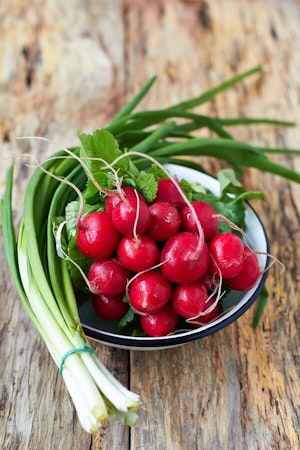 Onions take about 90 days to reach maturity, so be patient. When the foliage begins to turn yellow, fold it over sharply to speed the final ripening process. Harvest the onions before cooler fall weather, clip the roots and top the foliage down to one inch.
Onions take about 90 days to reach maturity, so be patient. When the foliage begins to turn yellow, fold it over sharply to speed the final ripening process. Harvest the onions before cooler fall weather, clip the roots and top the foliage down to one inch.
Radishes
When growing from seed, plant radishes in late January or early February when temperatures are consistently around 60 degrees during the warmest part of the day.
Plant the seeds three inches deep and one inch apart. Cover your crops with a tarp at night or when temperatures drop below 40 degrees. Radishes grow quickly, and they are ready to harvest 20 to 45 days after planting.
Squash
The ideal time to plant winter squash in our area is between early May and the end of June. Like watermelon, squash growing from seed should be planted in a small mound of dirt two feet wide and one foot deep. Plant five seeds per mound and thin down to two or three when they are well established.
After germination keep the patch well weeded and regularly watered. Once the plants have covered the mound, they will shade out any additional weeds.
Winter squash can be harvested when the fruits have reached a deep, solid color with a hard rind – usually by September or October. Cut squash from the vines carefully, leaving two inches of stem attached if possible. For fruits that are not fully mature, have been injured, have had their stems knocked off, or have been subjected to heavy frost, do not keep and use or compost them as soon as possible.
Turnips
Turnips prefer full sun, but will tolerate partial shade. Prepare the soil for growing from seed by loosening the top few inches and watering lightly. Sprinkle seeds on the surface, about 20 per foot, and use a rake to cover them with a half inch of dirt. Water immediately to encourage speedy germination.
Once the turnip greens have emerged, thin the crop to about four inches apart to provide room for good bulb and root development.
After 45-50 days you can pull up a turnip to check for maturity. If yes, harvest the crop right away and store in a cool, dry place.
Talk To The Experts At SummerWinds
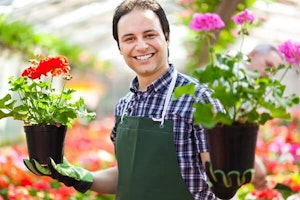
These are just a few of the great edibles you can expect success from when growing from seed in your Arizona yard. You can find a list of vegetable, herb, fruit and edible flower seeds and flower seeds we carry as seeds or stop in at any one of our convenient valley locations. Our experts will be happy to answer your questions about our wide variety of seeds and make recommendations for what to plant in your garden.If growing from seed still seems like more of a challenge than you’d like to take on, stop in and explore our fabulous selection of vegetable and herb plant starts, ready for planting in your raised garden bed, on your patio or in your garden.

